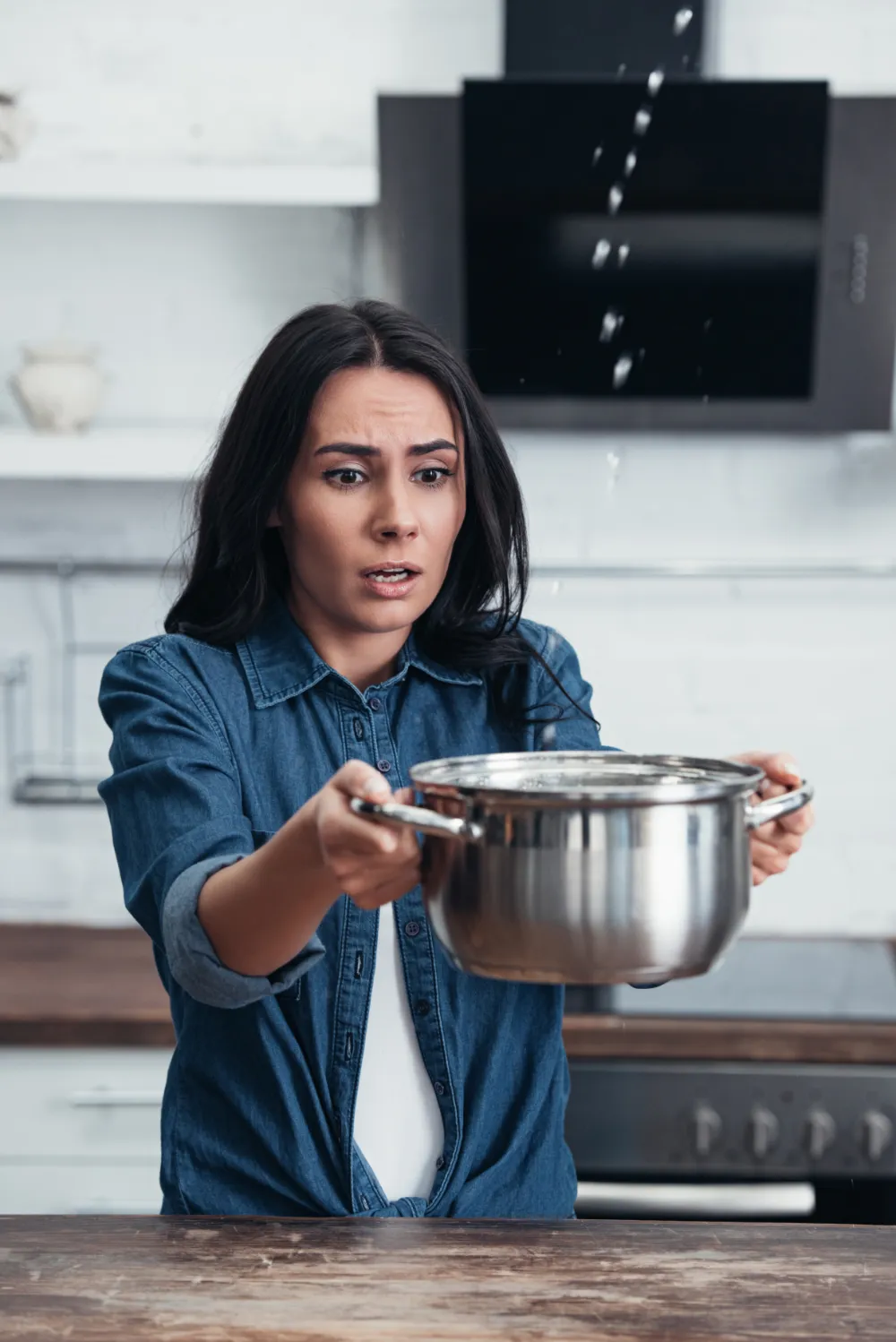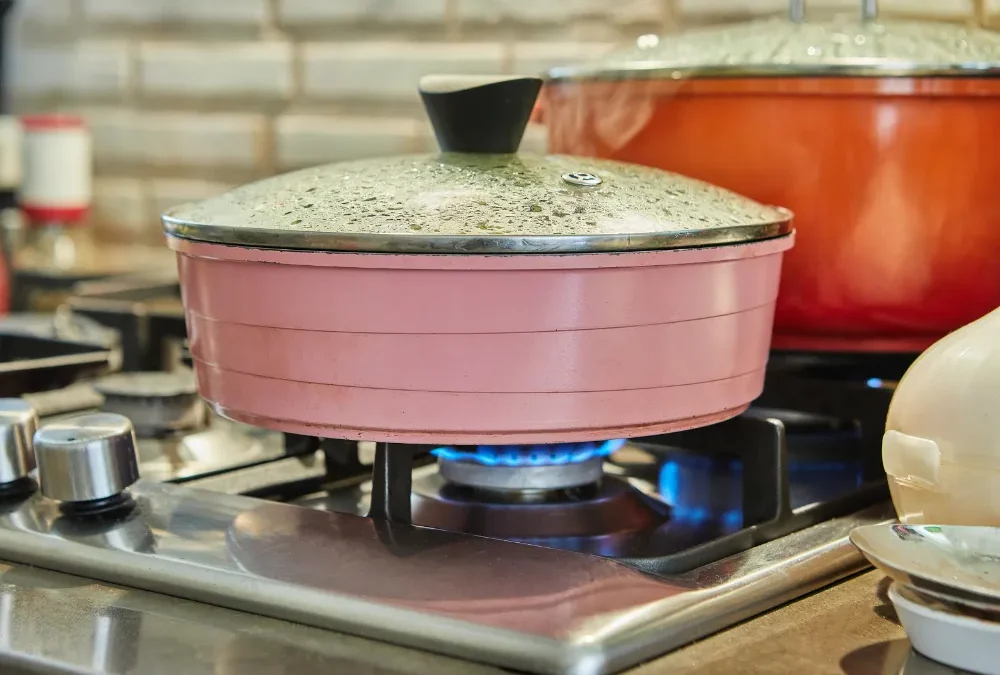Quartz Heat REsistAnce Vs: Granite Heat Resistance Reality Check. Under Normal & Extreme Conditions
When it comes to choosing the perfect kitchen countertop, heat resistance is often a top priority. Homeowners want a surface that can stand up to the rigors of daily cooking without fear of damage. This blog post will delve into the heat resistance of two popular choices – quartz and granite – examining how they perform under both normal kitchen conditions and more extreme scenarios.
Understanding Normal Kitchen Conditions and Temperatures
A bustling kitchen is a hotbed of activity, and that includes varying temperatures from cooking utensils. Let’s define what “normal” looks like in terms of heat:
- Oven Temperatures: Recipes commonly call for oven temperatures ranging from 300°F (150°C) to 450°F (230°C) for baking, roasting, and broiling.
- Stovetop Cooking: Pans on a stovetop can reach significant temperatures. Frying can see oil temperatures between 350°F (175°C) and 375°F (190°C), while boiling water is 212°F (100°C).
- Hot Pots and Pans: A pot just off a rolling boil or a pan pulled from a 400°F oven will transfer a considerable amount of heat to any surface it touches.
Under these normal kitchen conditions, the goal is to have a countertop that can safely handle the incidental placement of hot items without immediate or long-term damage.
When it comes to choosing the perfect kitchen countertop, heat resistance is often a top priority. Homeowners want a surface that can stand up to the rigors of daily cooking without fear of damage. This blog post will delve into the heat resistance of two popular choices – quartz and granite – examining how they perform under both normal kitchen conditions and more extreme scenarios.
Understanding Normal Kitchen Conditions and Temperatures
A bustling kitchen is a hotbed of activity, and that includes varying temperatures from cooking utensils. Let’s define what “normal” looks like in terms of heat:
- Oven Temperatures: Recipes commonly call for oven temperatures ranging from 300°F (150°C) to 450°F (230°C) for baking, roasting, and broiling.
- Stovetop Cooking: Pans on a stovetop can reach significant temperatures. Frying can see oil temperatures between 350°F (175°C) and 375°F (190°C), while boiling water is 212°F (100°C).
- Hot Pots and Pans: A pot just off a rolling boil or a pan pulled from a 400°F oven will transfer a considerable amount of heat to any surface it touches.
Under these normal kitchen conditions, the goal is to have a countertop that can safely handle the incidental placement of hot items without immediate or long-term damage.
Quartz Countertops: Performance Under Heat
Quartz countertops are engineered stone, typically composed of around 90-93% natural quartz minerals mixed with polymer resins, pigments, and binders. This composition gives them excellent durability and a non-porous surface.
Normal Kitchen Conditions: For typical kitchen use, quartz countertops generally perform well. They are designed to withstand temperatures commonly encountered during cooking. Most manufacturers state that quartz can resist temperatures up to 300°F (149°C) to 400°F (204°C) for short periods. This means that placing a warm dinner plate or a briefly rested pot won’t instantly damage the surface.

Why Use Trivets? Even with this resistance, it is always recommended to use trivets or hot pads under hot pots, pans, slow cookers, and other heat-generating appliances. Why? The resin component in quartz, while durable, has a lower heat tolerance than the natural quartz itself. Prolonged exposure to high heat, or sudden extreme temperature changes (thermal shock), can cause the resin to scorch, discolor, or even crack. These marks are often irreversible.
Extreme Conditions: Exposure to temperatures significantly above the recommended thresholds, or direct, sustained heat, can severely damage quartz countertops. This includes placing items directly from a very hot oven (e.g., above 400°F) or leaving a scorching pan on the surface for an extended period. The resin can melt or burn, leading to permanent yellowing, blistering, or cracking.
Granite Countertops: Performance Under Heat
Granite is a natural igneous rock formed from molten magma under immense heat and pressure deep within the Earth. This geological origin gives granite exceptional heat resistance.
Normal Kitchen Conditions: Granite is incredibly heat resistant, making it an excellent choice for a busy kitchen. It can easily handle the normal temperatures of cooking utensils. Granite typically withstands temperatures up to 1,200°F (649°C), with some sources even citing resistance up to 1,650°F (899°C) and a melting point of around 2,300°F (1260°C). This means that placing a hot pot or pan directly from the stove or oven onto a granite countertop for a brief period is unlikely to cause damage to the stone itself.
Why Still Consider Trivets? While the granite stone itself is highly resistant, most granite countertops are sealed to protect against stains. Repeatedly placing extremely hot items on the same spot can potentially degrade or discolor this sealant over time, leaving the granite more vulnerable to staining. Also, while rare, extreme and sudden temperature changes, especially near edges, can theoretically cause thermal shock, leading to cracks. Therefore, using trivets is still a good practice to protect the sealant and minimize any potential, albeit rare, risks.
Extreme Conditions: Granite’s natural formation under extreme heat makes it incredibly resilient. It is far less susceptible to heat damage than quartz under extreme conditions. Direct flame, such as from a blow torch, would be needed to cause significant damage to the stone itself. However, as mentioned, the sealant can still be affected by prolonged exposure to very high temperatures.
How This Safely Works for a Standard Home Kitchen
Both quartz and granite can safely function in a standard home kitchen, provided proper care is taken:
- Granite: Offers superior inherent heat resistance, making it highly forgiving for accidental hot pan placements.
- Quartz: Provides ample heat resistance for normal kitchen tasks., Recomending but not required the use of trivets and hot pads to protect its resin component.
The key takeaway for both materials is prevention is better than cure. While granite is incredibly robust, and quartz is highly resistant, consistently using trivets and hot pads will extend the life and maintain the pristine appearance of your countertops, regardless of the material.
Cambria:
- Heat Resistance:
- Link:
https://www.cambriausa.com/quartz-countertops/faq/product-care
Caesarstone:
Cosentino (Silestone):
- Heat Resistance:
- Link:
https://www.cosentino.com/usa/silestone/maintenance/
Daltile (ONE Quartz Surfaces):
LG Hausys (Viatera):
- Heat Resistance:
- Link:
https://www.lxhausys.com/us/blog/lg-viatera-quartz-review/
By understanding the unique properties of both quartz and granite, and by following simple precautions like using trivets, you can ensure your kitchen countertops remain beautiful and functional for years to come.
At Royal Granite, we’ve been helping Georgia families create beautiful, functional kitchens with the latest in countertop technology. Our expert team specializes in premium quartz and granite installations, ensuring you get the perfect surface for your lifestyle and budget.Contact us for more information regarding your New Quartz or Granite Countertops.
Royal Kitchen and Bahroom Countertops.
Reques your Free In-Home estimate today! We will get your new countertops installed in 10 Days or Less.!

